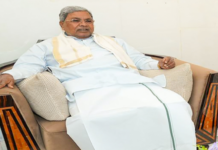NEW DELHI– India possesses approximately 8.52 million tonnes of rare earth element (REE) reserves, Minister of State Dr. Jitendra Singh informed Parliament on Wednesday, underlining the country’s growing focus on securing critical mineral resources for strategic industries.
In a written reply in the Lok Sabha, Dr. Singh said that an estimated 7.23 million tonnes of rare earth oxide (REO) are contained within 13.15 million tonnes of monazite deposits—found in coastal beach sands, teri and red sands, and inland alluvium—in states including Andhra Pradesh, Odisha, Tamil Nadu, Kerala, West Bengal, Jharkhand, Gujarat, and Maharashtra. An additional 1.29 million tonnes of REEs are located in hard rock terrains in parts of Gujarat and Rajasthan.
Exploration and augmentation of these resources are being undertaken by the Atomic Minerals Directorate for Exploration and Research (AMD), a division of the Department of Atomic Energy, which is surveying placer sands and hard rock zones across the country.
In addition, the Geological Survey of India (GSI) has added 482.6 million tonnes of REE ore across 34 exploration projects at various cutoff grades.
Over the past decade, India has exported 18 tonnes of rare earth minerals and has not imported any, the minister said.
Amid global supply chain uncertainties, particularly due to export restrictions imposed by certain countries on rare earth magnets, the Ministry of External Affairs is engaging bilaterally and multilaterally to ensure supply continuity. “These efforts are aimed at safeguarding Indian importers and supporting peaceful uses of nuclear energy, including in REE and related technologies,” Dr. Singh stated.
Recognizing the critical role REEs play in sectors such as electric vehicles, renewable energy, and defense, the Ministry of Mines has taken proactive steps to enhance supply chain resilience. India has signed bilateral agreements with several mineral-rich countries, including Australia, Argentina, Zambia, Peru, Zimbabwe, Mozambique, Malawi, and Côte d’Ivoire, and is working closely with international bodies such as the International Energy Agency (IEA).
India is also participating in global platforms like the Minerals Security Partnership (MSP), the Indo-Pacific Economic Framework (IPEF), and the Initiative on Critical and Emerging Technologies (iCET) to strengthen the critical minerals value chain.
To further bolster access to strategic minerals, the Ministry of Mines has established Khanij Bidesh India Limited (KABIL), a joint venture tasked with identifying and acquiring overseas assets with strategic importance. KABIL has signed an Exploration and Development Agreement with CAMYEN, a state-owned enterprise in Argentina, for lithium exploration in five blocks in the Catamarca province. The company is also actively collaborating with Australia’s Critical Minerals Office.
India is in the process of finalizing government-to-government (G2G) agreements with Brazil and the Dominican Republic aimed at fostering cooperation in REE and critical minerals. These MoUs are intended to promote research, innovation, and technological collaboration in the mining sector.
“Critical minerals like lithium, graphite, cobalt, titanium, and rare earth elements are in high demand due to their strategic applications,” Dr. Singh emphasized, adding that the Ministry has initiated several policy reforms to strengthen supply chain resilience in these vital sectors. (Source: IANS)













